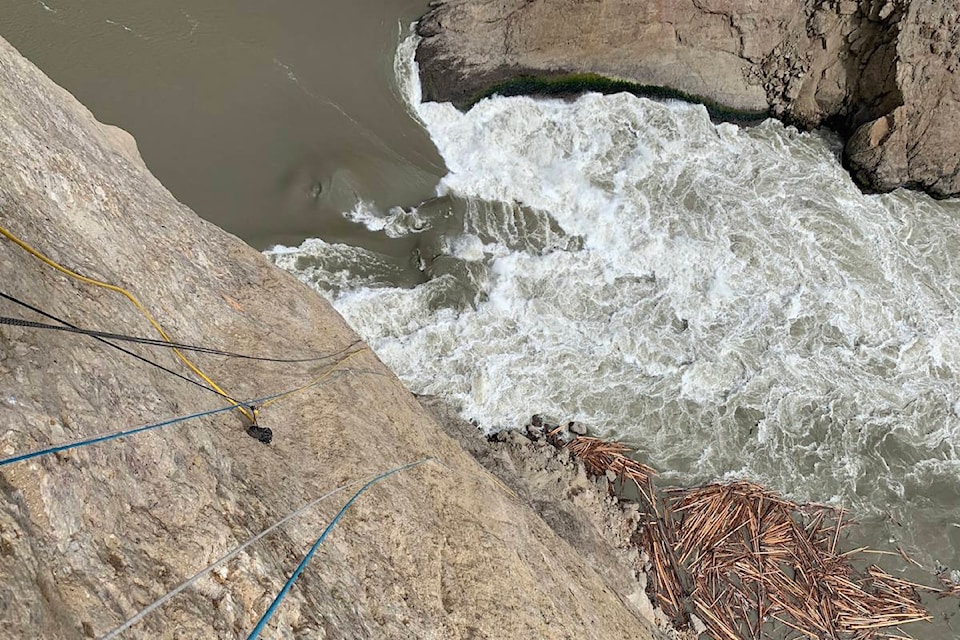It’s being called a milestone in terms of fish moving past the landslide obstruction on a remote part of the Fraser River.
“Significant progress” was noted on Sept. 1 at the Big Bar slide site when 30,000 fish were detected swimming past the blockage on their own.
“That was a significant accomplishment and a real milestone,” said Michael Crowe, environmental unit lead for the Big Bar Incident Command Post team, about the natural fish passage that instruments recorded.
Multi-pronged efforts by First Nations, federal and provincial officials are continuing to seek ways to help the fish blocked at the slide site, northwest of Kamloops.
“The chinook numbers are dropping,” Crowe said, adding that fish capture numbers had declined, but more sockeye and pinks will be arriving.
“We expect pinks to arrive in very large numbers in the coming days.”
They estimated that more than a million pink salmon maybe on their way, and they are looking for new fishing areas to increase productivity.
“We are uncertain if the recent success we’ve seen with sockeye will be achieved with pinks,” Crowe said.
In terms transporting fish by helicopter, so far they’ve moved more than 60,000 fish upriver of the slide. Another 73,000 “free swimming” fish have made it past the blockage on their own, including the 30,000 in one day, due to ongoing engineering work and rock scaling efforts where the main priority is creating channels for the fish, Crowe explained.
READ MORE: Goal is to free the fish as fast as possible
Work on a second fish wheel, and possible dipnetting is being considered. Test runs of the newly opened road look promising for trucking fish in the hours helicopters cannot fly.
The available work area for the rock scalers increased dramatically since the water levels started dropping in the past few days.
Plans are underway to install “anchor points” into the east wall of the canyon so that materials and heavy objects can be moved on cables across the river. The idea is to bring in a “spider excavator,” a non-tracked type of equipment, that can navigate over the constantly changing and challenging terrain, with specialized wheels. The plan is to bring it to the base of the slide in order to open up a big chunk of the blockage to allow fish to pass more freely.
About 190 personnel have been working on various aspects of the incident since it was reported in late June, from scientists and engineers, Indigenous fishing crews, archaeological monitors, field and support staff from the BC Wildfire Service, as well as biologists, rock scalers and hydrologists.
READ MORE: Helicopters moved 44,000 fish
@CHWKjourno
jfeinberg@theprogress.com
Like us on Facebook and follow us on Twitter.



